The trip to Strasbourg was a relief. While Paris was blanketed in gray smoke, Strasbourg came out as a surprise with occasional fluffy, white clouds, patches of clear, blue sky, and sunbursts interspersed with rainbows. It was precisely this which made me extend my stay in Strasbourg. The feeling of sitting leisurely, outside the splendid cathedral, sipping the Alsatian beer, and a sort of solace that makes you stay and stick your neck out to take detours. And to breathe in more of Alsatian moments, I decided to make a day trip to Colmar, the oldest and the most Alsatian of the towns in the region. And if this wasn’t enough, a little reading on Colmar educated me of the Grunewald altarpiece in the Unterlinden Museum, in Colmar. I have spent a good amount of time strolling through the galleries of Northern European Renaissance paintings, the scintillating beauty of these have somewhere permanently itched in my heart. A thought of being able to see Grunewald, could have been a reason enough to set for another journey. And when the journey is only of 45 minutes on a secondary railroad line, with the panoramic views of the southern segment of the Alsatian route, decision taking becomes a breeze.

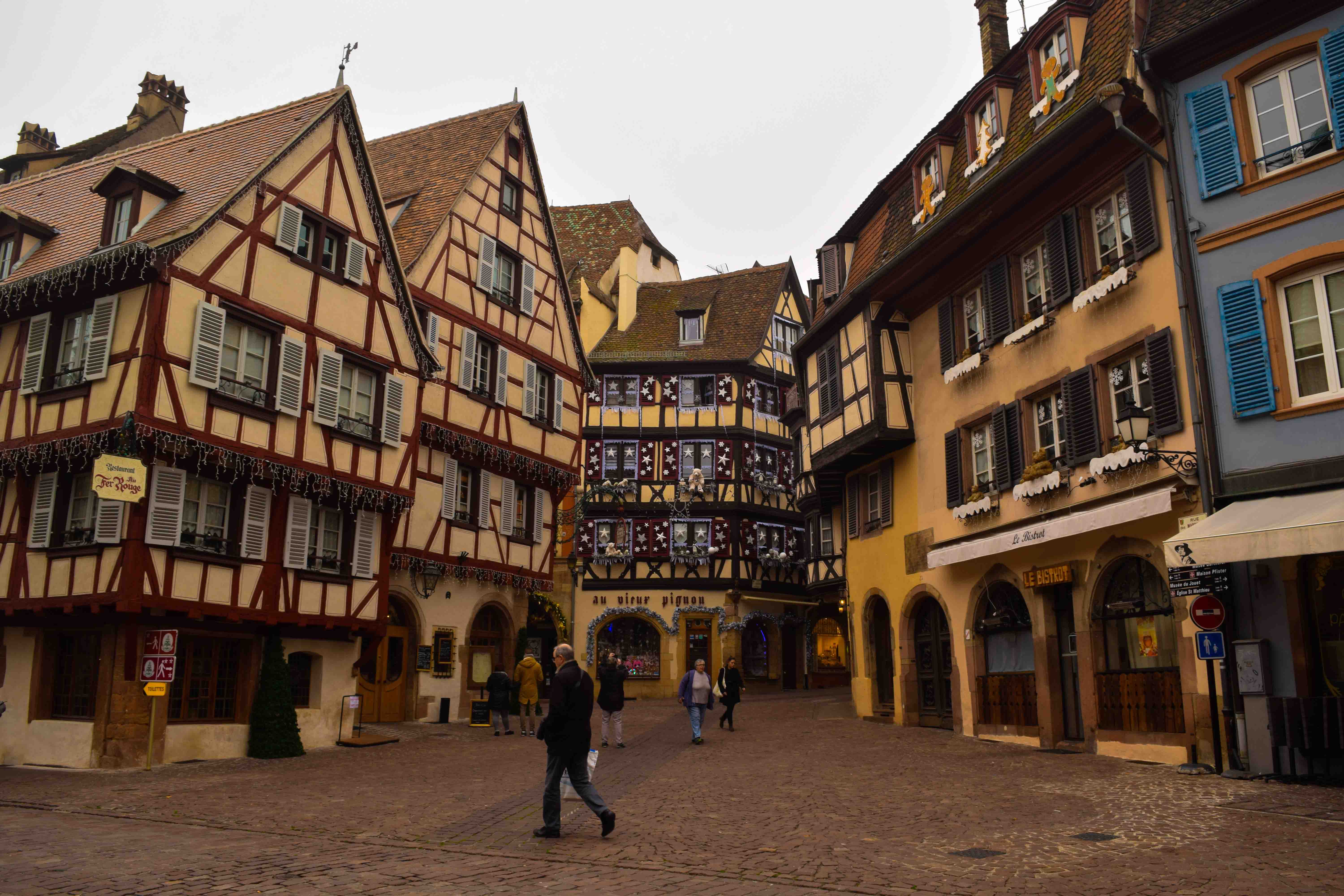
The next morning, I was at Colmar. I did an early morning trip to make the most of the town. As the train crisscrossed the diminutives vines, with the Vosges Mountains standing as crown, and a romantic spectacle of ruins of century old castles, my mind wandered in search of the folklores of Alsatian knights, and the muse of life that grew here independent of politics of Paris. In the distance were small towns that are now named after the vintages – Kaysersberg, for example. In the golden hue of the morning, the distant fields looked like sacred fires, preserving the unique character of this land.
The Alsace region has had its own share of political history. It has been passed back and forth between France and Germany over the years, as the rivalry between the nations grew. The Colmar was conquered by the French in 1673, and by 1870s the entire region became the German territory. It stayed German until after World War I, and was then again temporarily occupied as Germany expanded its territories during World War II. After the collapse of the Nazi empire, Colmar became a French territory again, but the German touch in the city architecture is hard to miss.

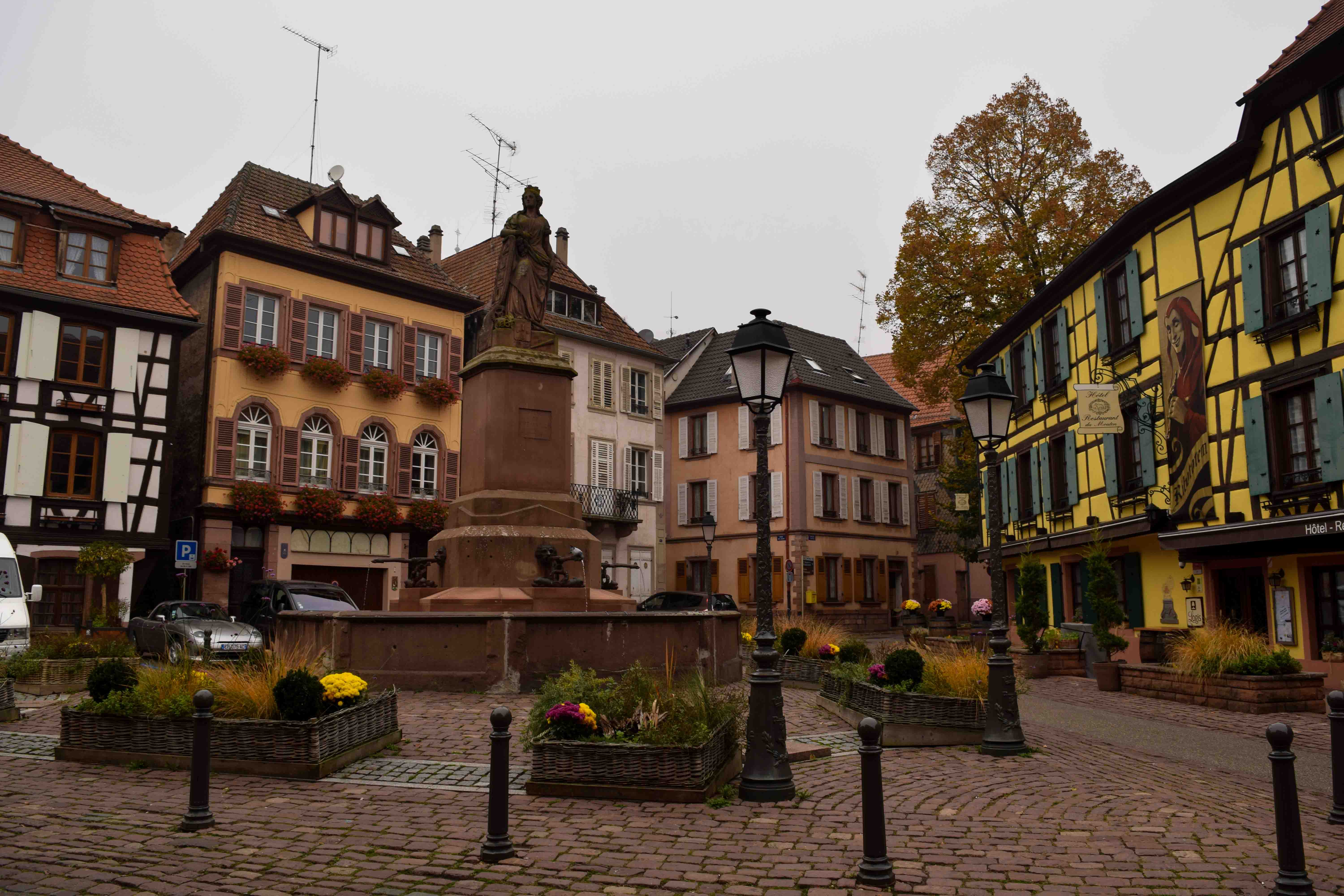
I was warned well of Colmar’s charm by my couch-surfing host in Strasbourg, and supplied with a list of places to visit and things to do. And, as always I decided to give the list a miss. There’s no fun in exploring if you don’t lose your path, and discover new places. Serendipity is a gift for travelers. Colmar could easily fit your imagination of a fairy-tale town, with adorable old town, museums and architectural landmarks. And to enjoy the age old charm of the town, head to Little Venice. Wandering through the little Venice and the adjoining Fishmonger’s district is charming, with its winding roads, cafes lined against the canal, enchanting colored houses, and buildings holding a share of history. The Alsace region has developed in autonomous fashion, independent of French and German politics and plutocracy. The independence and reverie of the region is easily seen in Colmar. Try this, the Alsatian have their language which is widely spoken in the region, the medieval and Renaissance houses are lovingly preserved, and the shops are still marked with elaborate wrought-iron signs. Fact is Alsatian have preserved their heritage, and Colmar is exquisite example of Alsatian culture, and conviviality. And did I forget to mention gastronomy here.

Colmar is a foodie’s delight, and the covered market by the Fishmonger’s district is probably the best place to try out culinary appeal of the region. Alsatian gastronomy is world famous: Foie gras and choucroute originated in the region. And in case you don’t have purse large enough to bear burden of the daintiness of Foie gras, the caviar, terrine, and truffles are a good exception to take on some guilt of a calorie rich sinful eating. Colmar plays host to a multitude of Michelin star restaurants. Do try the Marché couvert de Colmar, high quality local produce, and an enviable view of the canal from the charming terrace. Even the Alsaco is good; humble café with offer of a spectacular view of the Koïfhus. And while on the look-out, do stop by at some classic restaurants with stained glass windows, butlers in folklore costumes, brightly painted outsides and ceilings – these echo the pro-French wave at the turn of the century. Quite a dash from history, uniquely surviving as legend in the contemporary.
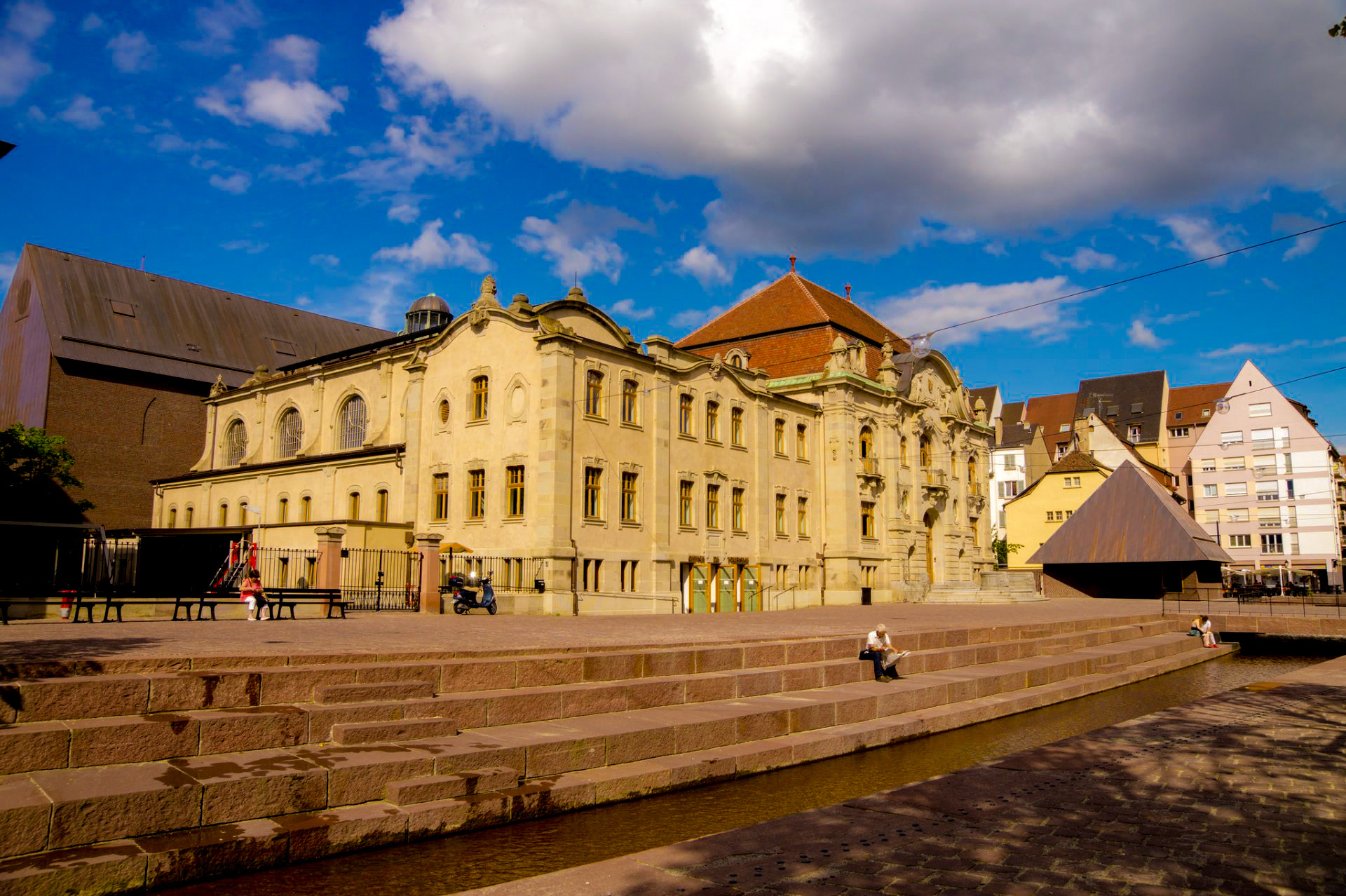
After taking a full round of the town, with customary snack breaks, I headed towards a discovery of one of the most prized Renaissance relics, and one of the reasons for me being in Colmar. The Unterlinden Museum, housed in a restored medieval convent, was my next stop. I deliberately went there towards the afternoon, to avoid the morning rush. One of the most attractive buildings, the museum hosts fine collection of decorative objects, in addition to the Grunewald’s work. The Gothic hall is lined with exhibits, and in the center, stands the bewildering Grunewald’s work. Much bigger and brighter than I assumed, the painting is the principal treasure of the museum. There would probably be a handful of pieces of art that can portray human suffering as the painting with crucifixion, with the two Marys and two Johns in attendance, does. The entire hall has a mystic appeal, as if each piece was individualized, and crafted with perfection.
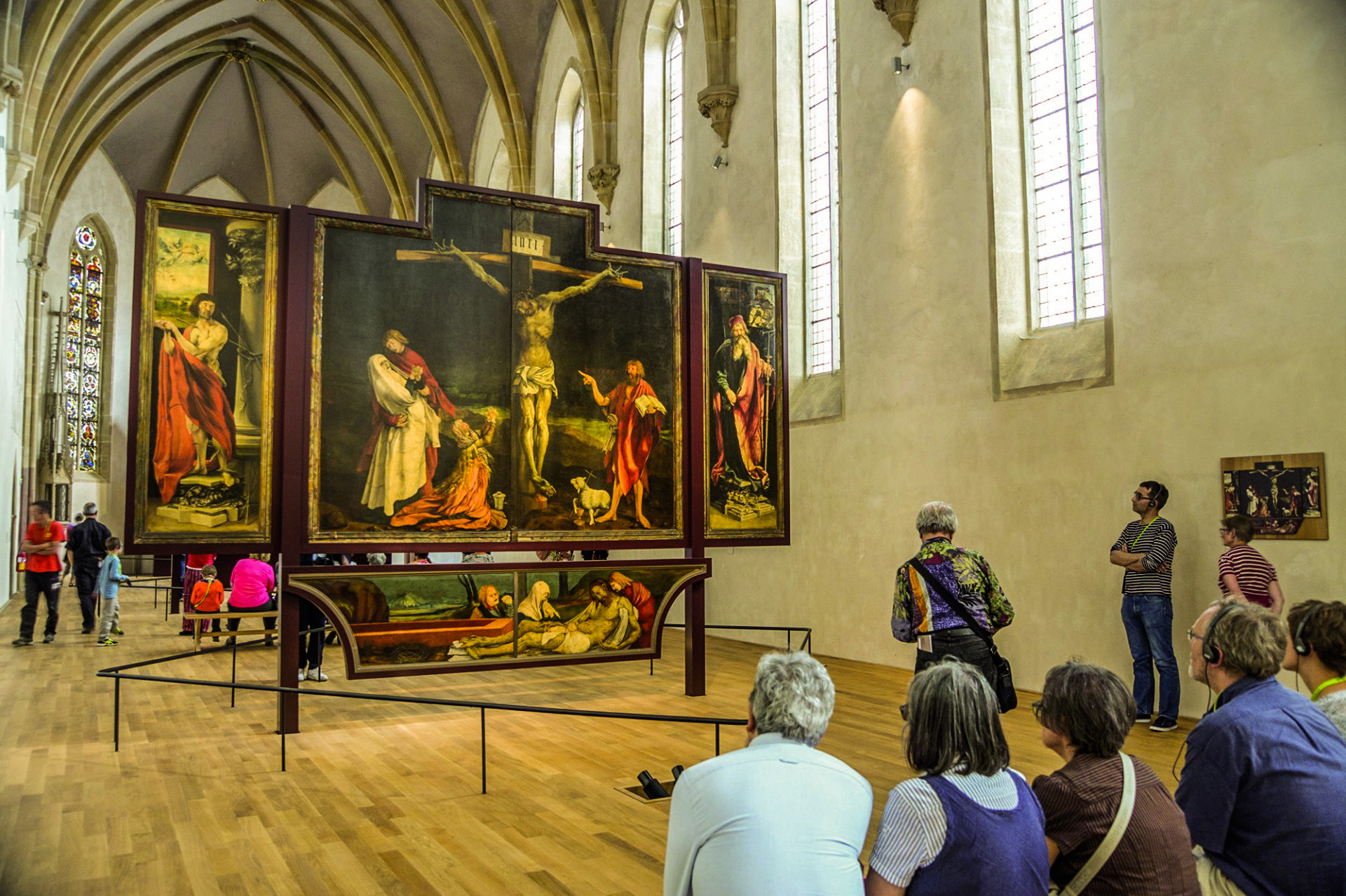
The paintings were commissioned by the Order of St. Anthony for their monastery at Issenheim, about 20 miles south of Colmar, and are often referred to as Issenheim altarpiece. Between 1512 and 1516, the artists Niclaus of Haguenau (for the sculpted portion) and Grünewald (for the painted panels) created this celebrated altarpiece. Little by little, Issenheim commissioned and acquired a rich collection of art works by famous artists of that era. In 1852 the rich collection was transferred to the chapel of the former Dominican convent known as the Unterlinden in Colmar, which became the principal collector, and since then hasn’t failed to enthrall the visitors and art lovers.
Matching the exquisiteness these must visits, are the normal houses of Colmar, which are often lavishly decorated. In among the houses are boutique shops selling local produce like chocolate and wine, as well as art and antiques. The houses carry such an air of the medieval world, that one can spend an entire day poking around the neighborhoods in a click frenzy mood.
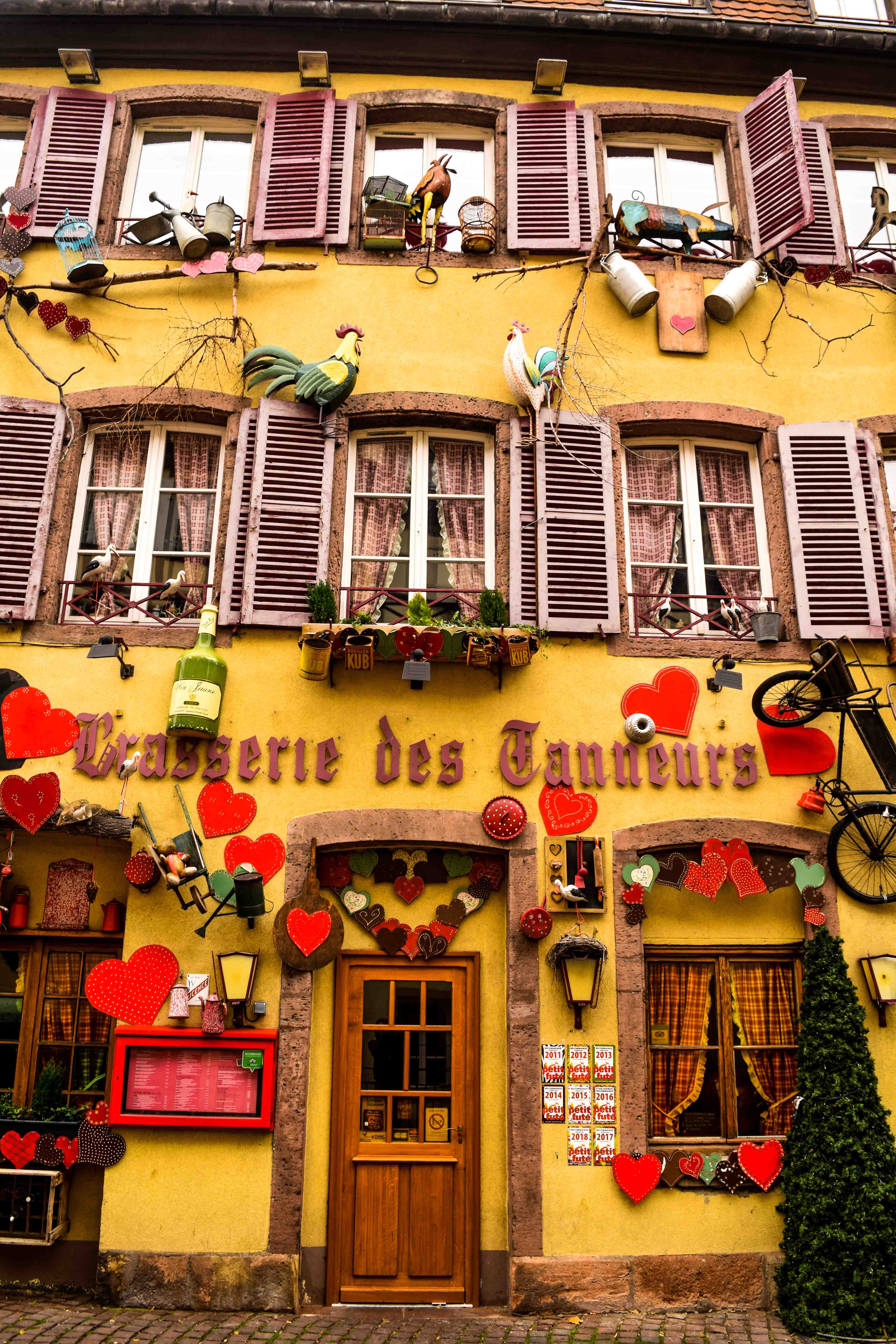
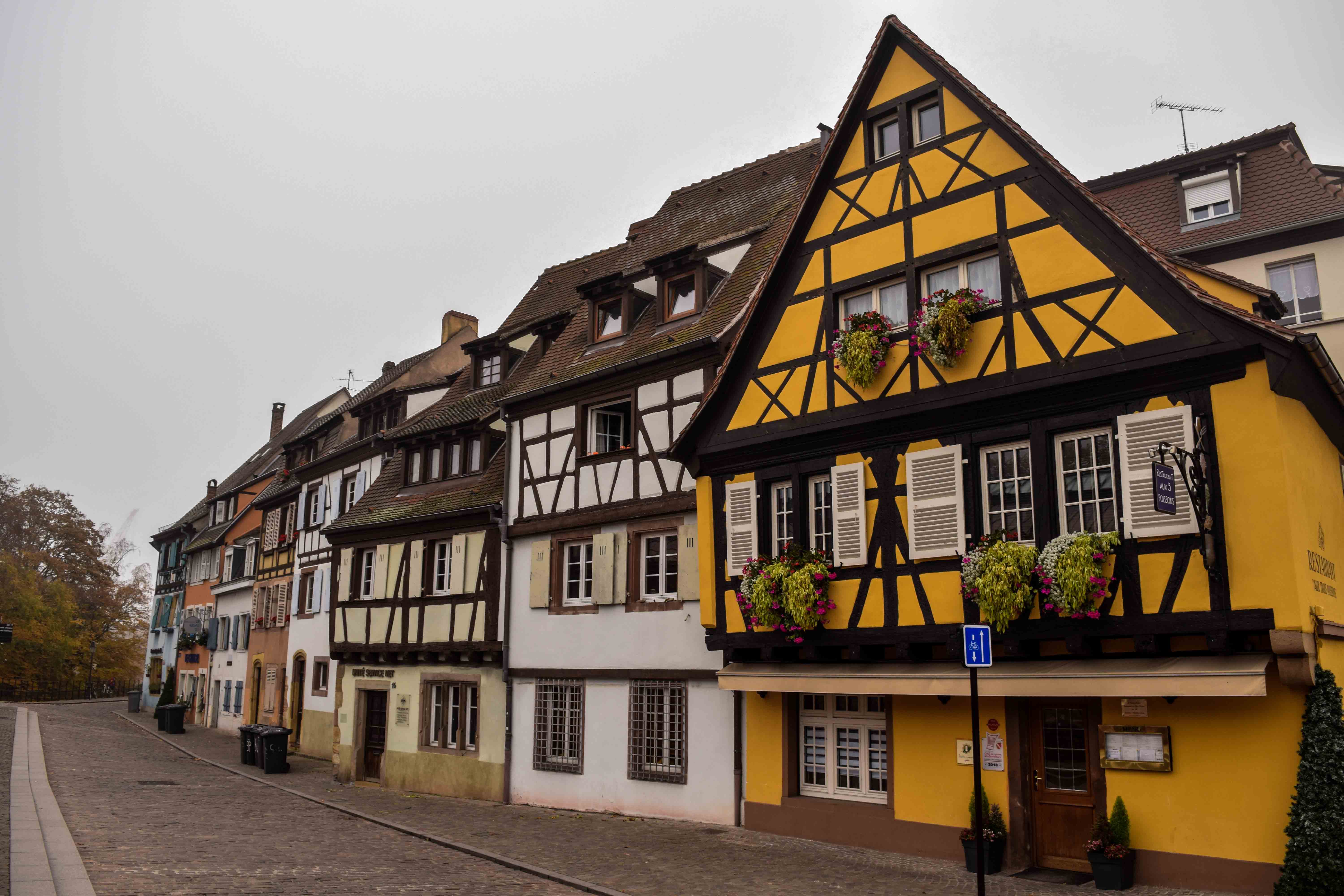
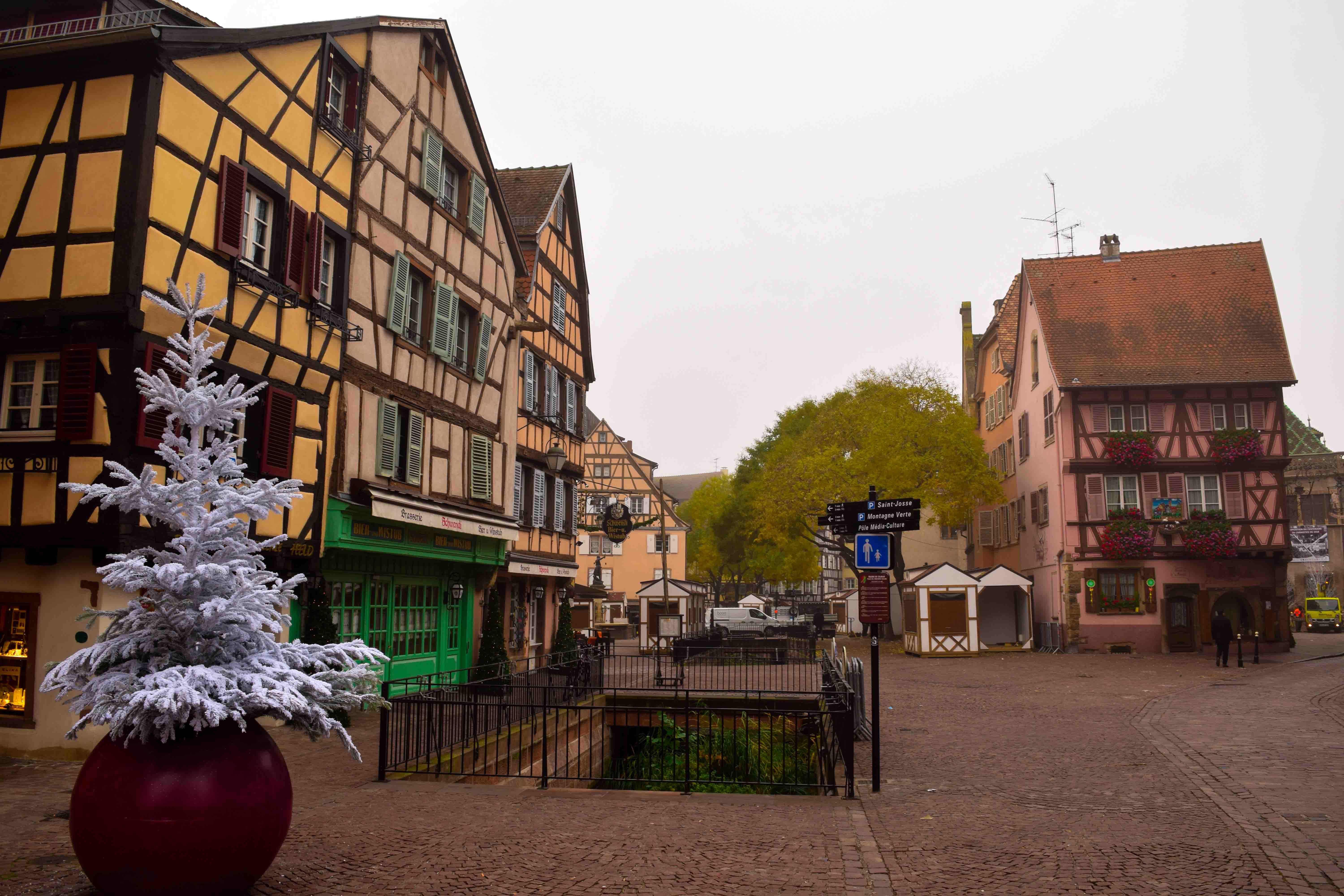
It’s incredible how such a small town of just 80,000 individuals can pack so much of history and culture, and provide innumerable chances to bump into amazing things defying the conformity of European standards, present an eclectic mix of French-German taste and beliefs, has romantic canals and streets, sumptuous cuisines and wines, and even a dialect unique to the town.
To get: Colmar is located on the border of France and Germany, near Switzerland. The nearest big city is Strasbourg, from where it takes just 40 minutes on train to reach Colmar. Colmar is in the heart of the French region called Alsace, famously known for its vineyards and wonderful wines. The region is pioneer in wine tourism.






